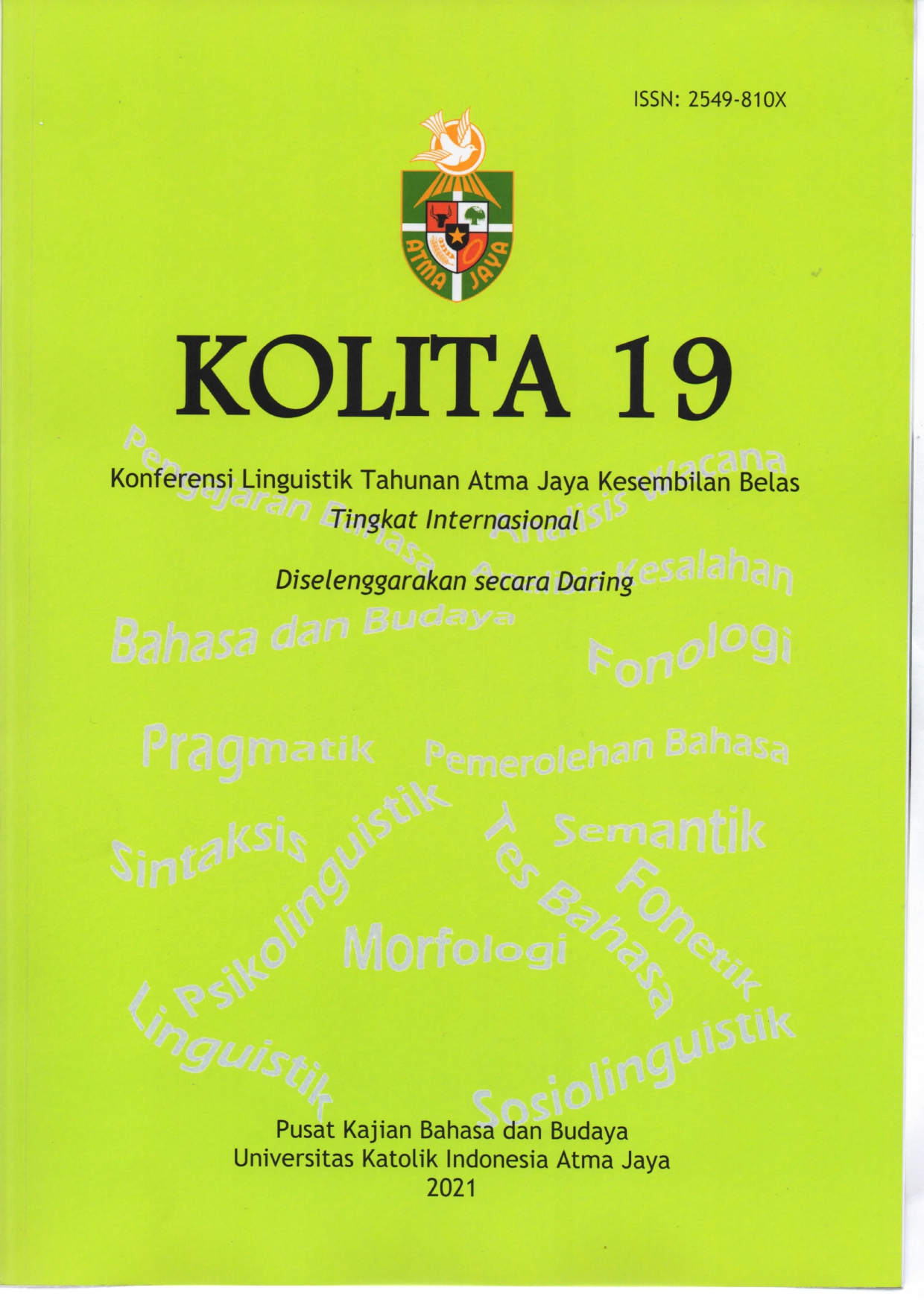EFL TEACHERS’ AND LEARNERS’ PERCEPTION OF WRITTEN CORRECTIVE FEEDBACK IN WRITING: A CASE STUDY OF INDONESIAN MALE AND FEMALE TEACHERS AND LEARNERS
Keywords:
written corrective feedback, perception, teachers, learners, genderAbstract
Learners of a second or foreign language will undoubtedly encounter various problems in their learning process, which means that they will most likely make numerous mistakes and errors when producing the language, be it in speech or in writing. In order to deal with this, language teachers have to actively give feedback on the students’ errors, so that they can learn from them and avoid repeating them in the future. Nevertheless, it can be seen that this topic is still open to debate, in the sense that numerous researchers have varying opinions concerning this. One of the most important things that need to be investigated further deals with the perception of the written corrective feedback (WCF) itself. It is essential that we look into the point of view of both the teachers and the learners (both male and female) since they may not always have the same opinion regarding WCF. In order for the teaching and learning process to be successful, it is preferable that all parties have similar ideas of how WCF should be given. Therefore, this study is an attempt at exploring the perception of EFL teachers and learners regarding WCF in writing. The respondents for the present research are 4 lecturers and 30 students from Bunda Mulia University. Considering that gender is also taken into consideration, the respondents are equally divided into male and female participants (i.e. 2 male and female lecturers as well as 15 male and female students). The lecturers involved in this research are the ones that are currently or have previously taught writing subjects, whereas the students are from the fourth and sixth semesters as they have already experienced several levels of writing classes. The data is collected via an online questionnaire which is adapted from Chen et al. (2016). The questionnaire items consist of both close-ended and open-ended questions and are analyzed qualitatively. The result reveals that there are some similarities and differences between the lecturers’ and students’ perception of WCF, as well as some similarities and differences between the male and female respondents.






